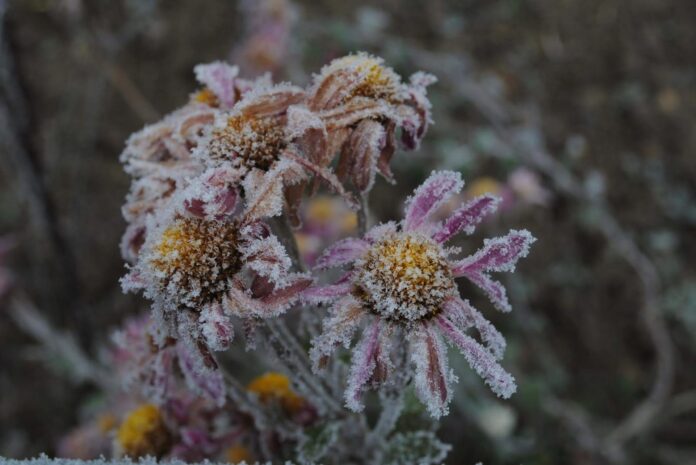A crucial day in every gardener’s calendar, you can usually expect the first frost to hit in November or December. Being prepared for the first frost of the season could be the difference between life and death when it comes to your plants.
Toolstation’s resident landscaping experts have nine tips for how gardeners can prepare for the freezing nightime temperatures to come this winter:
What is frost?
“Frost occurs when temperatures fall below 0°C and the water vapour in the air freezes. This results in the formation of tiny, sparkling ice crystals around your plants.
“Although incredibly pretty, frost can damage and even kill plants. Frost causes the water inside plant cells to expand, breaking the cell walls and affecting the plant’s ability to transport vital nutrients.”
Which plants need protecting?
“When you’re considering new plant species, always research the hardiness rating. This tells you the sorts of cold temperatures the plant is able to tolerate. If the plant has a tag or label, this will usually be listed. If not, Google is your friend!
“In general, young seedlings, new growth, tender perennials, half-hard varieties and tropical or subtropical plants are most susceptible to frost – and may need protection to survive the winter nights.”
- Choose the right plants for your garden
Unfortunately, some plants just won’t be suited to the climate of your garden. When buying new plants in summer, it’s easy to forget the hardiness rating, but you’ll save yourself disappointment if you stick to plants that are likely to survive the temperatures experienced by your garden in winter.
- Bring pots indoors
Of course, the best way to protect tender plants like young seedlings and tender perennials is by moving them inside – away from the elements. It’s easy to do this with potted plants which can be moved into a conservatory, garage, porch or greenhouse. This has the added benefit of preventing the pot itself from splitting.
That said, be cautious of moving plants into heated spaces like kitchens, as the warm temperature may be too much of a shock. And, although it’s a bit of a hassle, if possible, move the pots back outside during daylight hours so they can absorb the sun they need.
- Move pots together
If a plant is too big to move inside, or you simply don’t have room, the next best option is to group several pots together. The grouped plants have greater thermal mass and therefore help each other stay warm.
Also look to group the pots in a sheltered area such as in front of a wall, particularly on the southern or western side of the house. This will help to protect them from frost.
- Cover plants
If moving plants isn’t an option, you may want to cover them ahead of frosty nights. While you can buy horticultural fleeces and plant covers, it’s also possible to improvise with household items. I’ve seen gardeners use the top of plastic bottles, wicker baskets and even old newspapers.
- Water plants in the morning
If you’re concerned about frost and are expecting a dry day, you can also try watering your plants in the morning. Wet soil absorbs heat throughout the day. When the temperature falls at night, this has an insulating effect, protecting your plants.
- Ensure good drainage
Although damp soil has an insulating effect, overly wet soil can make it easy for shallow-rooted trees and young plants to be uprooted by the wind. For this reason, it’s important to deal with drainage issues promptly.
Standing pots on old bricks or pot feet is a good idea to avoid leaving your plants sitting in icy water. In fact, my top tip is to save old wine corks. These can be reused for this purpose!
- Apply a layer of straw or chippings
For borderline-hardy plants including cape fuchsia and agapanthus, applying a dry mulch made of straw or bark chipping is often the best option to protect the plant’s crown against frost. Essentially, this just creates a barrier of protection against the winter temperatures.
- Grow hedges to hold wind
As well as having lots of benefits for wildlife, hardy hedge varieties such as yew, laurel and red robin act as windbreakers, preventing cold winds from sweeping through the garden and eliminating wind chill factor.
Not got the essentials you need to keep your garden healthy this winter? Toolstation has all the landscaping tools you’ll need for success.
Source: https://www.toolstation.com/landscaping/c1

| [donate]
| Help keep news FREE for our readersSupporting your local community newspaper/online news outlet is crucial now more than ever. If you believe in independent journalism,then consider making a valuable contribution by making a one-time or monthly donation. We operate in rural areas where providing unbiased news can be challenging. |



















